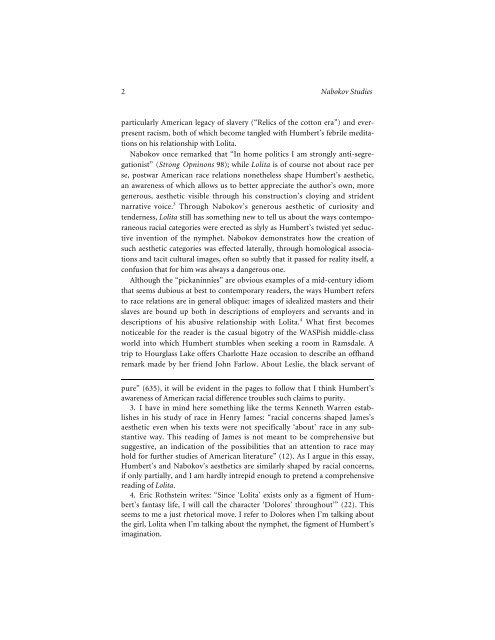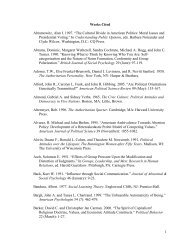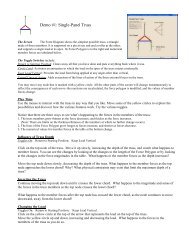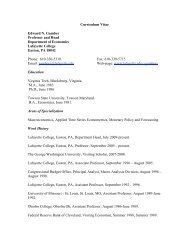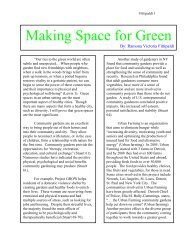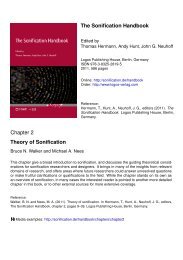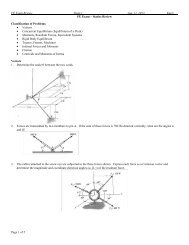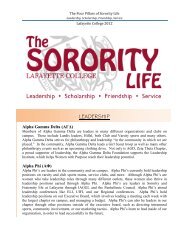Of Pickaninnies and Nymphets: Race in Lolita - Project MUSE
Of Pickaninnies and Nymphets: Race in Lolita - Project MUSE
Of Pickaninnies and Nymphets: Race in Lolita - Project MUSE
- No tags were found...
Create successful ePaper yourself
Turn your PDF publications into a flip-book with our unique Google optimized e-Paper software.
2 Nabokov Studiesparticularly American legacy of slavery (“Relics of the cotton era”) <strong>and</strong> everpresentracism, both of which become tangled with Humbert’s febrile meditationson his relationship with <strong>Lolita</strong>.Nabokov once remarked that “In home politics I am strongly anti-segregationist”(Strong Opn<strong>in</strong>ons 98); while <strong>Lolita</strong> is of course not about race perse, postwar American race relations nonetheless shape Humbert’s aesthetic,an awareness of which allows us to better appreciate the author’s own, moregenerous, aesthetic visible through his construction’s cloy<strong>in</strong>g <strong>and</strong> stridentnarrative voice. 3 Through Nabokov’s generous aesthetic of curiosity <strong>and</strong>tenderness, <strong>Lolita</strong> still has someth<strong>in</strong>g new to tell us about the ways contemporaneousracial categories were erected as slyly as Humbert’s twisted yet seductive<strong>in</strong>vention of the nymphet. Nabokov demonstrates how the creation ofsuch aesthetic categories was effected laterally, through homological associations<strong>and</strong> tacit cultural images, often so subtly that it passed for reality itself, aconfusion that for him was always a dangerous one.Although the “pickan<strong>in</strong>nies” are obvious examples of a mid-century idiomthat seems dubious at best to contemporary readers, the ways Humbert refersto race relations are <strong>in</strong> general oblique: images of idealized masters <strong>and</strong> theirslaves are bound up both <strong>in</strong> descriptions of employers <strong>and</strong> servants <strong>and</strong> <strong>in</strong>descriptions of his abusive relationship with <strong>Lolita</strong>. 4 What first becomesnoticeable for the reader is the casual bigotry of the WASPish middle-classworld <strong>in</strong>to which Humbert stumbles when seek<strong>in</strong>g a room <strong>in</strong> Ramsdale. Atrip to Hourglass Lake offers Charlotte Haze occasion to describe an offh<strong>and</strong>remark made by her friend John Farlow. About Leslie, the black servant ofpure” (635), it will be evident <strong>in</strong> the pages to follow that I th<strong>in</strong>k Humbert’sawareness of American racial difference troubles such claims to purity.3. I have <strong>in</strong> m<strong>in</strong>d here someth<strong>in</strong>g like the terms Kenneth Warren establishes<strong>in</strong> his study of race <strong>in</strong> Henry James: “racial concerns shaped James’saesthetic even when his texts were not specifically ‘about’ race <strong>in</strong> any substantiveway. This read<strong>in</strong>g of James is not meant to be comprehensive butsuggestive, an <strong>in</strong>dication of the possibilities that an attention to race mayhold for further studies of American literature” (12). As I argue <strong>in</strong> this essay,Humbert’s <strong>and</strong> Nabokov’s aesthetics are similarly shaped by racial concerns,if only partially, <strong>and</strong> I am hardly <strong>in</strong>trepid enough to pretend a comprehensiveread<strong>in</strong>g of <strong>Lolita</strong>.4. Eric Rothste<strong>in</strong> writes: “S<strong>in</strong>ce ‘<strong>Lolita</strong>’ exists only as a figment of Humbert’sfantasy life, I will call the character ‘Dolores’ throughout’” (22). Thisseems to me a just rhetorical move. I refer to Dolores when I’m talk<strong>in</strong>g aboutthe girl, <strong>Lolita</strong> when I’m talk<strong>in</strong>g about the nymphet, the figment of Humbert’simag<strong>in</strong>ation.


